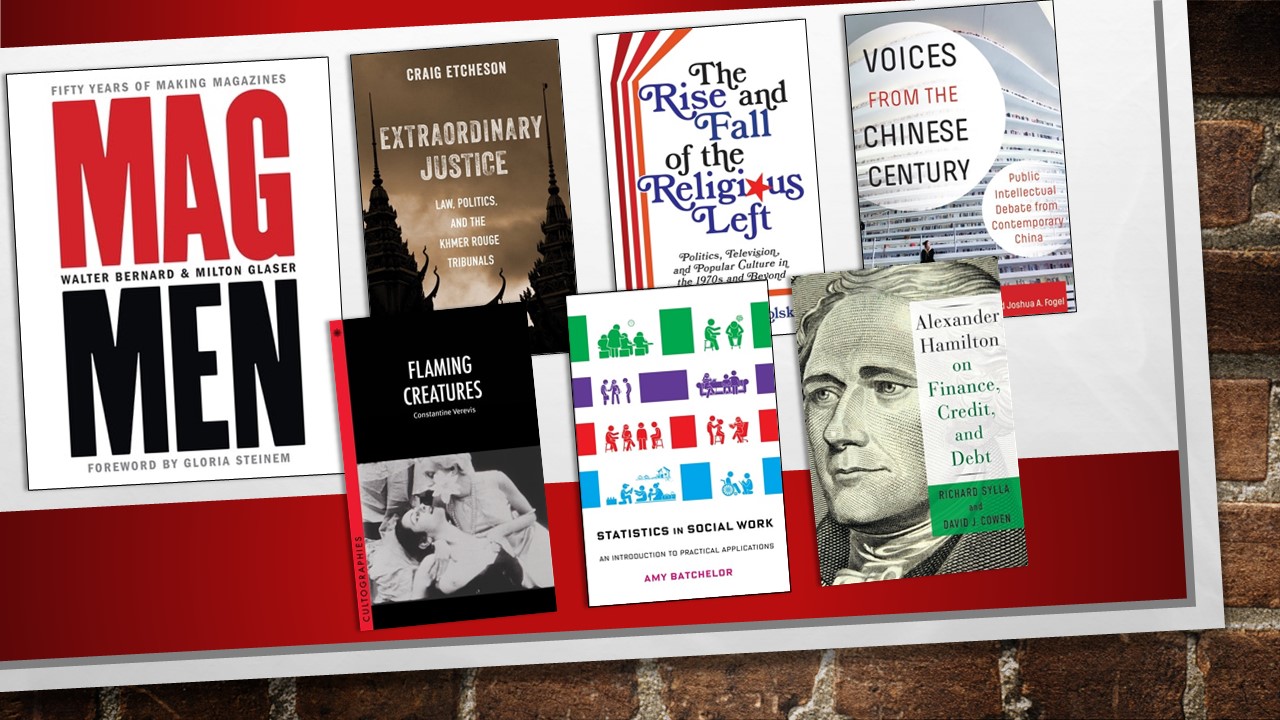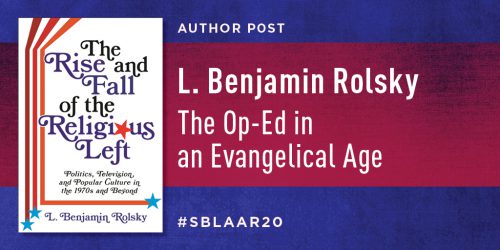The Religious Left on the Rise Again? Let’s Wait and See
By L. Benjamin Rolsky

In January, Joseph R. Biden was sworn in as the forty-sixth president of the United States. As New York Times columnist Ross Douthat recently observed, the inauguration was a “very American-Catholic spectacle” because it represented a moment in which the public face of American religious life, one shaped largely by white conservative Protestants, was disrupted by an eclectic collection of Catholic voices. Also illustrative of this moment has been Biden’s decisions to replace white Protestants with white Catholics within his cabinet. This reflects a much wider disparity across all branches of the federal government between American Protestants and Catholics. At this very moment, no White Anglo Saxon Protestant heads up a single branch of the U.S. government.
For Douthat, what was on display that day was nothing less than a form of Catholicism on the ascent. Less a set of ideas, liberal Catholicism is a culture: one that is “recognizable in its institutions and tropes, its iconography and allusions—to Pope John XXIII and Jesuit universities, to the “seamless garment” of Catholic teaching and the “spirit” of the Second Vatican Council, to the works of Thomas Merton and hymns like “On Eagle’s Wings.” Douthat celebrates the multiethnic and institutional character of liberal Catholicism while acknowledging its anxious attempts to include as many as possible within its fold.
Douthat ultimately doubts that Biden’s brand of Catholicism is up to the challenge, but perhaps with some support from other religious liberals the conservative dominance of religion in the public square may finally have met its proverbial match.
While there is a bright future for this type of Catholicism as mainline Christianity continues to fade into oblivion, there are a number of potential obstacles in the way of its fullest ascent in American public life: some from within and some from without. The first being the lack of a coherent and persuasive progressive vision of the public good; the second, the unwillingness of the Democratic Party to entertain populist causes such as a universal basic income or student loan forgiveness. Douthat ultimately doubts that Biden’s brand of Catholicism is up to the challenge, but perhaps with some support from other religious liberals the conservative dominance of religion in the public square may finally have met its proverbial match.
Also writing for the Times, journalist Elizabeth Dias noted a similar ascent within liberal Christian circles because of Biden’s Catholicism and the role it plays in his life. Usually a marker of conservative Protestant support for Republican candidates, Biden’s commitment to attending mass has arguably made him the most “religiously observant commander in chief in half a century.” Like Douthat, Dias identifies a number of characteristics of Biden’s faith that help illustrate its liberal commitments in the twenty-first century including a willingness—no, an insistence—to think intersectionally about climate change, poverty, and prison reform as interconnected phenomena in American public life. In particular, Biden’s electoral victory is compelling and noteworthy because he is the “repudiation of the claim by many conservative leaders that Democrats are inherently anti-Christian.” Dias concludes her analysis by reminding her readers that Biden has not only foregrounded justice and reconciliation in his administration but he has also been willing to publicly mourn with those in the most pain.
Despite Biden’s short time in office, these readings suggest that a liberal Christian ascent is exactly what the country needs. While Douthat doesn’t necessarily believe that Biden’s liberal Catholicism will remain as vibrant and public as it is now, there is reason to doubt his pessimism. In addition to exploring Biden’s faith background in her reporting, Dias also covered the campaigns of Senator Raphael Warnock and Representative Cori Bush in their efforts to bring attention to the least of these in American society. While Dias and Douthat rely on the phrase “liberal Christianity” to describe their subjects, a broader phrase for such activism in the public square would be religious left. “There is a sense of moral synergy on the left, among not only progressive Christians but also humanists, Muslims, Jews, Sikhs and the spectrum of faith traditions,” says Derrick Harkins, who led interfaith outreach for the Democratic National Committee this past cycle. For Pastor William J. Barber II, journalist Jack Jenkins, and other commentators on progressive activism, it is this very synergy of strategy and courage that is giving many in the religious left hope for a different and brighter future.
Despite Biden’s short time in office, these readings suggest that a liberal Christian ascent is exactly what the country needs.
Moving forward, such spiritual momentum on the left will need to be sustained by clear messaging and a willingness to think and act structurally. If conservatives have achieved anything since the 1970s, it has been the complete and utter destruction of the public good in the name of electoral victory. The very fabric of our public life has been torn asunder in an attempt to maintain power at any cost. This has meant a fundamental undermining of the most important mediating institutions the republic possesses, including a free and unfettered press. Confidence in these institutions must be restored, and an alternative must be presented in order to finally stem the tide of antiestablishment conservatism that seeks to destroy everything in its path. Luckily, progressive activism has a great deal of experience thinking structurally about how best to make society as equitable as possible for the most vulnerable. A new common sense is needed, one that sees the public good as something to pursue in collaboration with, instead of over and against, the other. The degree to which the Democratic Party is supportive of this movement is impossible to predict. Based on what has unfolded thus far, progressives may have more to fear from those in their own party than they do from their Republican colleagues across the aisle.
For one-time president of Notre Dame Father Theodore Hesburg, the recipe for spiritual success was and is a straightforward one for the religious left. “If religious persons are committed profoundly to one simple reality all around the world, it must be peace. . . . And without justice, especially to the poor, the homeless and the hopeless, there will be no peace.” Simple enough. The work continues.
L. Benjamin Rolsky is an Affiliated Scholar at the Center for Cultural Analysis at Rutgers University. He is the author of The Rise and Fall of the Religious Left, which foregrounds the foundational roles played by popular culture, television, and media in America’s religious history.








